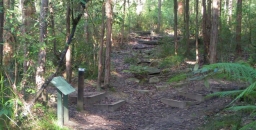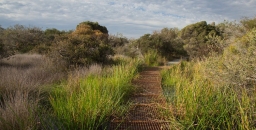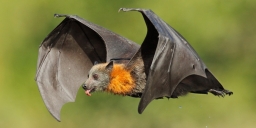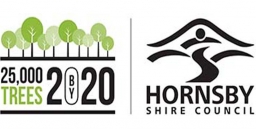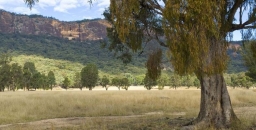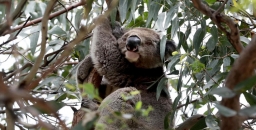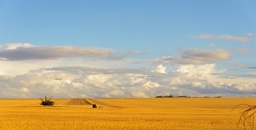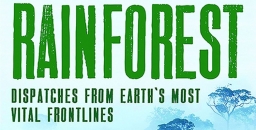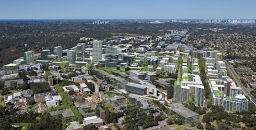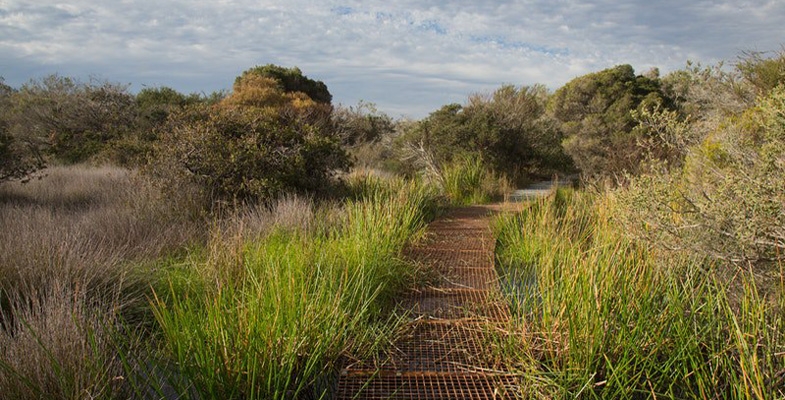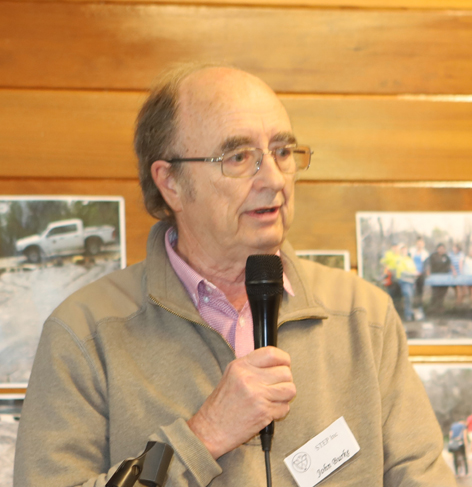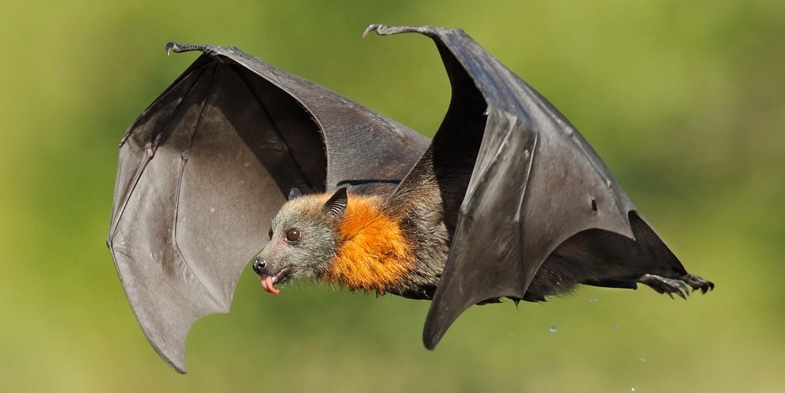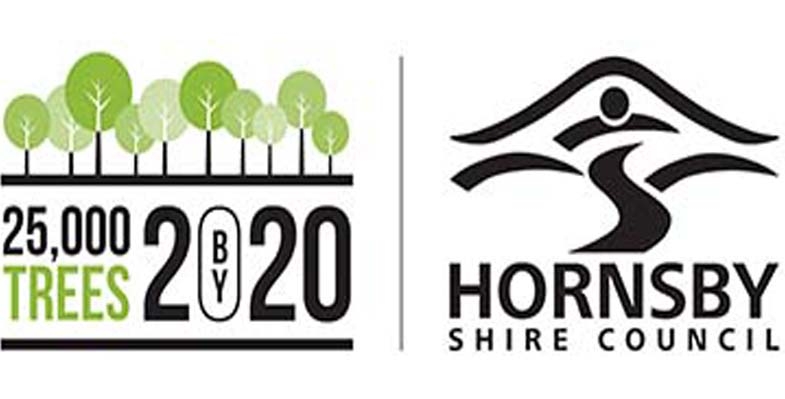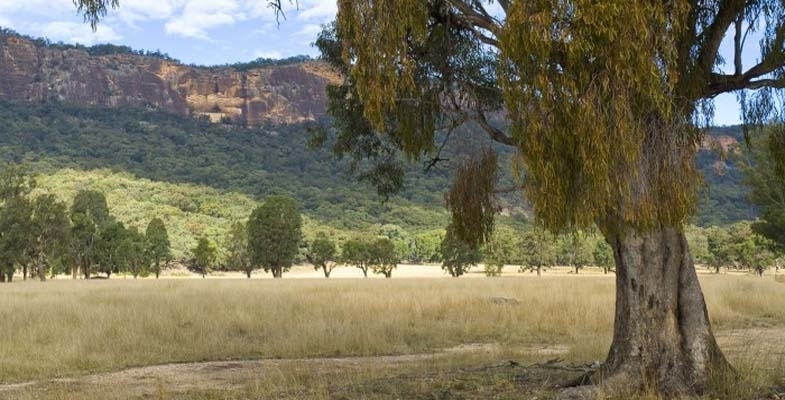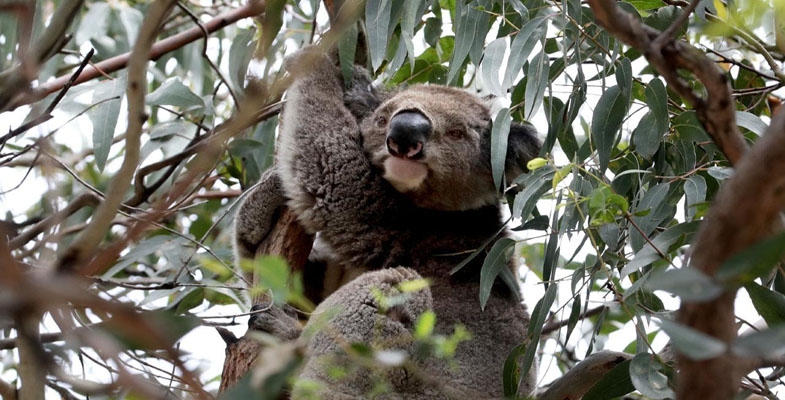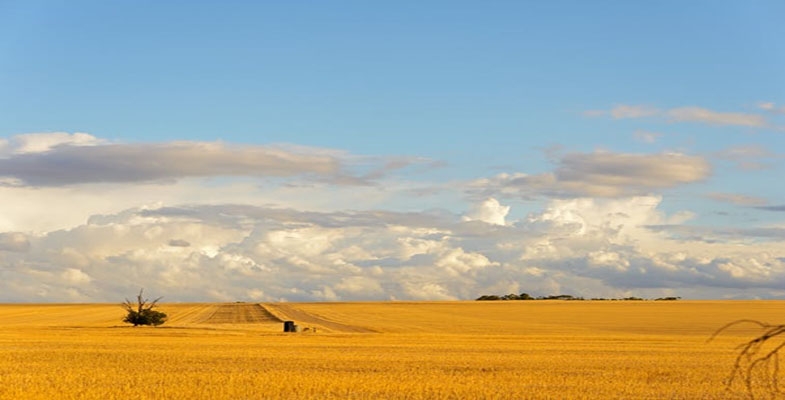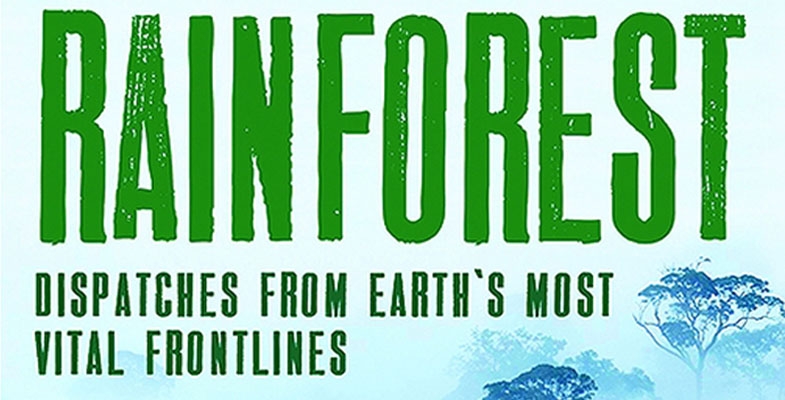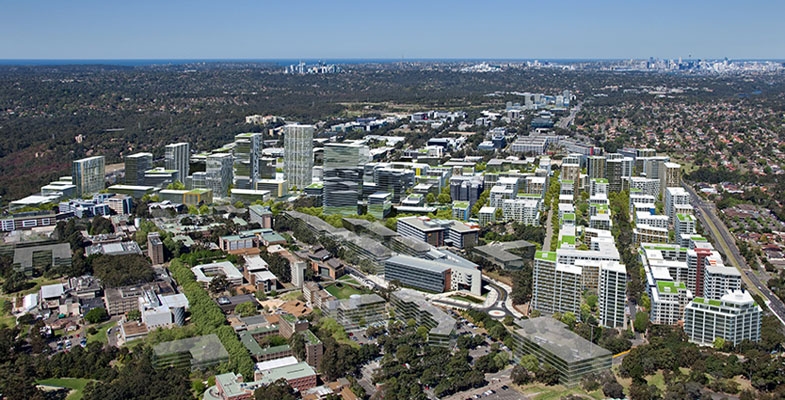STEP Matters 197
- Default
- Title
- Date
- Random
- STEP member, Beverley Gwatkin, came up with the great idea of conducting walks for people unfamiliar with the amazing features…Read More
- This walk on 22 June was fascinating. We heard all about the diverse diet and life of the local Kai’ymay…Read More
- Our 40th birthday party on 22 July was a great occasion to remember the bold actions of the STEP people…Read More
- Over 700 native plant species and 300 vertebrate species have been recorded in Ku-ring-gai. On 19 June Chelsea Hankin (council’s…Read More
- Call for Review of 10/50 Legislation At their meeting on 11 July, council resolved: to write to the state government…Read More
- 2018 Budget The NSW government is flush with money thanks to the property boom. But, according to the Opposition, the…Read More
- The ABC reported that the May budget has reduced the budget allocation of funding to the biodiversity and conservation division…Read More
- What if Australia were to stop farming? At approximately 3% of gross domestic product, the removal of agriculture from the…Read More
- There are many books on the environment, as you will see if you scan the shelves of bookshops like Kinokuniya,…Read More
- The amount of development along Epping Road is astronomical. Sure, this development is near the Chatswood to Epping train line…Read More
- We recently received a message from a fellow bird enthusiast about his blog called the Ultimate Beginners Guide to Bird…Read More
New Walk Series – Introduction to our Local Bushland
STEP member, Beverley Gwatkin, came up with the great idea of conducting walks for people unfamiliar with the amazing features of our local bushland so she approached Peter Clarke who agreed to lead the walks.
Until his recent retirement, Peter was Ku-ring-gai Council’s community volunteer program coordinator, so he has a wealth of knowledge about the local flora and fauna.
STEP will be organising a walk every couple of months on a Sunday morning. Click here for more information and to register.
Guided Aboriginal Heritage Walk around North Head
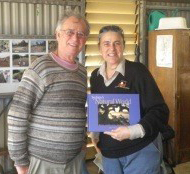 This walk on 22 June was fascinating. We heard all about the diverse diet and life of the local Kai’ymay clan, the history of encounters between the aboriginal people and colonialists. The two hour walk ended up going on for four hours!
This walk on 22 June was fascinating. We heard all about the diverse diet and life of the local Kai’ymay clan, the history of encounters between the aboriginal people and colonialists. The two hour walk ended up going on for four hours!
Did you know that the first known map of Port Jackson had the name of Eve’s Cove for the area now known as Manly Cove? The area was given this name after the first meeting of the British settlers and some aboriginal women on 29 January 1788.
The walk was led by Karen Smith from the Aboriginal Heritage Office. The office’s main role is to regularly monitor and manage Aboriginal heritage sites to ensure their protection. The Aboriginal Heritage Office develops and implements community education programs and events aimed at increasing the collective knowledge of Aboriginal cultural heritage.
40th Birthday Party
Our 40th birthday party on 22 July was a great occasion to remember the bold actions of the STEP people who developed great ideas for doing a better job of caring for our local bushland and fought against some very destructive proposals.
Two of our pioneers were Helen Petersen and John Burke. They both provided some insights into their work in their presentations to the audience that are reproduced below.
Helen was president from 1979–82 and active as a committee member throughout the 1980s. John has been actively involved with STEP since the 1980s and was president from 1990–93 and 2006–08.
Helen Petersen OAM
I have been asked to give a short overview of STEP’s early days and their achievements.
Looking back 40 years the following cannot really convey the difficulties we faced and overcame. Public awareness of the value of urban bushland has changed somewhat for the better which has filtered through to bushland managers.
After living in Singapore and Tokyo for seven years in the sixties, returning to South Turramurra made me realise how Sydney was so fortunate to have such wonderful, diverse bushland.
After the netball courts’ development in South Turramurra it became clear that our remaining urban bush needed protection and care. Thereafter a small group of STEP members continued on the long journey towards the present major force which STEP is today, caring for the environment.
Firstly we prepared a constitution and then became incorporated as STEP Inc.
Under the direction of Robin Buchanan we produced an impressive plan of management for South Turramurra bushland. This was the first of STEP’s publications, and is still respected today. This plan was so popular, two editions were sold, providing STEP with considerable funds.
In addition to these endeavours we realised that we had to engage and re-establish our contact with Ku-ring-gai Council in a more meaningful way. After successful lobbying by STEP, council formed a bushland management working party on which STEP was represented by two members. Major issues were discussed and acted upon. Further to this we established contacts within the North Shore Times and then Hornsby Advocate.
Several STEP members also worked under Joan Bradley’s tuition in the Mosman area, carrying out her method of bush regeneration. We also taught, through the National Trust, small groups in the Bradley method. We applied this knowledge while working with volunteers in South Turramurra’s bushland.
The STEP Track was also created by volunteers and is still maintained today. As well we led groups on walks through the Lane Cove Valley.
A significant event occurred when Ku-ring-gai Council was awarded a Commonwealth Employment Grant to employ four young people together with a trained supervisor to regenerate Fraser Park in Wahroonga. Here was the opportunity to showcase a large area of the park using the Bradley Method in moderately weed infested sections, as well as tackling severely degraded areas with other less sensitive methods. This involved the careful use of Round-Up administered only by the supervisor, together with the physical removal of some established weeds, such as privet.
Over the period of a year the natural regeneration in the Bradley treated areas was remarkable. However, in the formerly badly degraded sections there was no regeneration of indigenous species. Therefore we prepared a list of plants local to Fraser Park which we gave to council’s nursery team for propagation purposes. When grown these plants were successfully introduced to the relevant areas. The combination of all of these methods produced significant results. To this end the feasibility and cost effectiveness of a fulltime regeneration team in Ku-ring-gai was established.
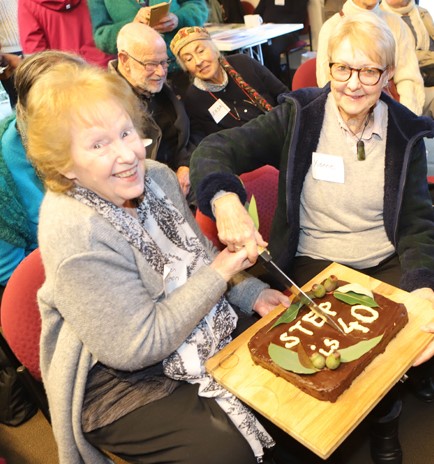
Past presidents Helen Petersen and Yvonne Langshaw
While working in Fraser Park we also provided knowledge to residents whose properties were adjacent to the bush, thereby stopping the dumping of garden refuse. In addition, many complimentary letters were received by council from residents having witnessed the transformation of their bush.
Council was also given three framed prestigious awards for Fraser Park from outside organisations. They were gratefully received by council and hung in the Parks Department.
In 1985 STEP was successful in obtaining a Commonwealth Employment Program Grant which provided funding for six people to work on a major regeneration project at Browns Field. Browns Field was chosen because of its special significance and, I believe, the work there is still continuing.
Time does not allow me to detail STEP’s considerable influences in Lane Cove Valley Conservationists, Australian Association of Bush Regenerators, Ryde TAFE and Lane Cove State Recreation Area before it became a national park.
John Burke
It’s great that the STEP’s 40 year history has been written. Reading it you will get a sense of the thousands of hours of work that the committee has put in, of the hundreds, if not also thousands, of reports, submissions, responses to draft plans, meetings, publications and site inspections and the huge amount of administration needed to keep such an organisation in business.
Saving the world is indeed not a spectator sport. It’s hard work.
Now everything that I’m going to say will be in the book but there are some points that I think are worth mentioning. In the brief time allotted to me I want talk about some of the things STEP has done. Give me another hour or so and I could talk about the wonderful people, some of whom are here today, who have been the doers. Many of them are of course mentioned in the book.
While there is, and will always be, much to be done – it’s also clear that a lot of progress has been made over these 40 years.
In the days before bushland management existed, it was seen by those with responsibility for bushland as not much more than an area reserved for roads, playing fields, garbage tips and the like. Indeed, twice, to my knowledge, councils had to be stopped from turning part of the Lane Cove Valley into a garbage tip. One of the reports on the proposed Lane Cove Valley Freeway spoke of how the views for motorists would be excellent if the road went through the middle of the bush. A version of enjoying it while destroying it. That was the sort of thinking that had to be changed, and to some extent, has been.
While STEP was of course not solely responsible for changing things in Ku-ring-gai and surrounds, we did have quite an influence. But there was a wide awakening throughout the whole community. The Lake Pedder and Franklin Dam campaigns from the late 1960s to the early 1980s were testament to that. More locally, the Bradley sisters developed bush regeneration and groups like STEP and KUBES emerged.
Ku-ring-gai was prevailed upon to form what was called the Bushland Management Working Party. Helen Petersen joined as STEP representative and I as a community representative. Janet Fairlie-Cuninghame and Harley Wright were there too. Jane Gye and others came later. Councillors and staff were there at first but soon lost interest. I reckon that was because they didn’t know what we were talking about and assumed it would all come to nothing. So for a while we ran the show ourselves and made recommendation after recommendation to council through the Parks and Reserves Committee where we had a seat. Many of those recommendations were approved by council, but not many acted upon.
A major achievement of the Working Party was the writing of a plan of management for
Ku-ring-gai bushland. We believed it was the first such plan in Sydney and perhaps in the state. Council adopted it in 1984.
Council funded a huge report on all of its bushland by Robin Buchanan, and a film and brochures and suddenly we were seen in a different light. People like Robin Grimwade started coming out of the universities with environment degrees and the nature of council’s staff changed for the better. The relationship with the Working Party changed from one where we were dragging council along to one where the staff felt that they had the better credentials. We had won and settled down into different sort of relationship with council and its staff. The role became more that of supporting staff against the ignorance of the councillors as well as keeping the staff focused.
One important issue was the proposal for the Lane Cove Valley Freeway. This road would have bisected the valley, bisected parts of suburbs and created noise and nuisance without achieving much. It was a radial route to the CBD while the actual need was for a route that allowed vehicles to bypass Sydney rather than head for the Harbour Bridge. We produced a position paper that set out the traffic and environmental reasons for opposing it, were joined by people like Bruno Krockenberger and participated in the Coalition Against Lane Cove Valley Freeways where Elaine Malicki was so effective. We were there at the start of that campaign and we saw it through. We supported the tunnel under Pennant Hills Road through further enquiries and, along with those supporting our views, won the day.
We of course had other wins, the solution to the dangerous corner on the Arterial Road below Koola Ave saved bushland and saved council millions, the amendments to the UTS Lindfield and Adventist developments are other examples. Probably more important, however, was, and still is, our ability to participate in the debate, to influence opinions and thus to achieve better environmental outcomes. We often lose our environment by a series of small decisions. Pushing back to change the conventional wisdom bit by bit is the other side of that coin.
STEP, along the way, also broadened its outlook from the very local to the wider Australian and world issues as we realised that they are all interconnected.
One issue that we took up was that of population growth and STEP has been the only environmental group that I know of to campaign on the issue. None of the three major political parties want to talk about it, environmental groups such as ACF and NCC run a mile despite it being perhaps the most important environmental threat facing Australia and the world. State governments and our councils hide behind the fallacy that it’s all the Australian government’s doing and out of their control.
It’s hard to think of an environmental problem that would not be a lesser threat with fewer people on the planet, in Australia and in Sydney. In Australia, at our current rate of growth we are doubling every 45 years. That means that Sydney will have 18 million in the probable lifetime of my grandchildren and Australia 100 million. This seems to be exactly what Lucy Turnbull’s Greater Sydney Commission wants. So goodbye backyards and urban bushland and hello to another World City. Tokyo is a world city – you can go up their tall tower there and look down over hundreds of thousands of dwellings and play a game of spot-the–tree. With our atrocious record on extinctions, degrading our river systems, dry land salinity and the rest it’s surely time to at least talk about it.
The fact is that, on present trends, we could still accept 70,000 immigrants a year while stabilising our population in the decades ahead. Plenty of room for refugees there, no need to run the risk of being called xenophobic, or racist! Of course there are plenty of countries with stable or declining populations that are doing very well. Japan, again, is still the third biggest economy in the world with a huge untapped workforce in its women and a declining population.
As I said earlier, I haven’t mentioned the wonderful individual members of the STEP committees. We have been fortunate to have a succession of very competent people over 40 years who have run and still run STEP. Some are here today and more are mentioned in the history that has been published. They deserve our admiration and our thanks.
In summary, STEP has been effective and STEP has made a difference and so all the work has indeed been, and continues to be worthwhile.
Biodiversity in Ku-ring-gai
Over 700 native plant species and 300 vertebrate species have been recorded in Ku-ring-gai. On 19 June Chelsea Hankin (council’s Natural Areas Officer) gave an overview of council’s fauna monitoring program, including the latest results of their three long-term monitoring programs. She made the following points.
 Grey-headed Flying-fox
Grey-headed Flying-fox
The Ku-ring-gai Flying-fox Reserve (KFFR) in Gordon has been home to flying-foxes since the 1960s with reports of occupation in the 1940s.
Every third Thursday in the month (in collaboration with Ku-ring-gai Bat Conservation Society and regular volunteers) council conduct fly-out counts at strategic locations surrounding the KFFR.
Monthly counts provide long term data and ties in with the national census.
Numbers flying-foxes have fluctuated, though a downward trend is clear.
KFFR is important during extreme heat when temperatures climb to over 40°C because it has good structural complexity of vegetation layers (canopy, mid- and understorey) so flying-foxes are able to move down into the lower cooler layers of vegetation.
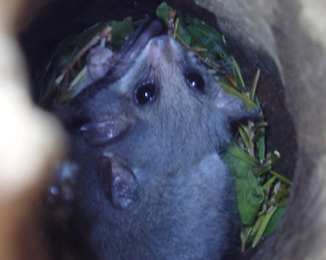 Eastern Pygmy Possum
Eastern Pygmy Possum
The Eastern Pygmy Possum monitoring program has been running for more than three years in collaboration with volunteers.
28 nest boxes have been installed.
Eastern Pygmy Possums have not been identified on the western Lane Cove NP side of the LGA. We’ve had continued presence of EPP in areas with connectivity to either Ku-ring-gai Chase NP or Garigal NP, with evidence of successful breeding.
Eastern Pygmy-possum have been observed foraging on a range of flora species, including Banksia ericifolia, B. spinulosa, B. serrata, Lambertia formosa, Angophora hispida and Callistemon citrinus.
Cameras have detected plenty of other wildlife: Swamp Wallabies, Feathertail Glider, Brushtail Possum, Antechinus and Sugar Glider.
Microbats
Council began monitoring microbats at Pool to Pond (WildThings program) sites and creek lines in 2017. In 2018 the program was expanded to include natural bushland areas, wetlands, golf course dams and backyards without water features (a total of 64 sites).
Thirteen species have been detected, half of which are threatened.
The three most common species have been Eastern Freetail Bat, Eastern Bentwing-bat (threatened) and Gould’s Wattled Bat (a generalist species and highly adaptable to the urban landscape – sometimes seen taking advantage of insect concentrations around lights).
The specialist fishing bat Southern Myotis (threatened) has only been detected at larger bodies of water like dams, creeks and sediment ponds/wetlands. Southern Myotis require open stretches of water without clutter (aquatic vegetation or algae on surface) so they can ‘trawl’ using their large feet to catch small fish and aquatic invertebrates.
Three new records have confirmed the presence of Chalinolobus dwyeri, a species which until now had only been recorded once in 1992.
Freshwater Crayfish
Targeted surveys of freshwater crayfish in the last year have shown that two native species are co-existing, Euastacus australasiensis and E. spinifex.
Report Sightings
Contribute to council’s biodiversity database by report interesting fauna sightings to This email address is being protected from spambots. You need JavaScript enabled to view it..
Useful Apps
FrogID https://www.frogid.net.au
OzAtlas https://www.ala.org.au/who-we-are/downloadable-tools/ala-mobile-app/ contribute directly to the Atlas of Living Australia database
Hornsby Council News
Call for Review of 10/50 Legislation
At their meeting on 11 July, council resolved:
- to write to the state government calling for a formal review of the 10/50 Clearing Code
- to present a motion for consideration at the NSW Local Government Conference calling for a formal statewide review of 10/50
The request is being made on that basis that:
… as the formal review was commenced following only two months of the scheme's operation, rather than two years operation as was the original intent of the legislation, it is questionable whether the review assessed the full impact of the 10/50 scheme over time.
The scheme commenced in August 2014.
The mayoral minute calling for the review argued that there is continuing community and councillor concern regarding the integrity of vegetation clearing being undertaken under the 10/50 entitlement scheme, and the ongoing loss of trees in 10/50 entitlement areas appear to have little to do with bushfire risk or hazard reduction. It pointed out that reversing the decline in tree canopy is a key objective of the Greater Sydney Commission and the clearing code is in conflict with council’s objective to plant 25,000 trees over the next two years.
Let’s Plant 25,000 Trees
The mayor, Philip Ruddock, continues his efforts to improve the tree coverage of the Hornsby Shire to make amends for losses over recent years.
$1 million has been allocated from the budget to plant 25,000 trees by September 2020. Details and a tally of trees planted are provided on http://trees.hornsby.nsw.gov.au.
Council is calling on the community to help plant these trees on special tree planting days and to nurture them as they grow.
A key source of the new trees will be council’s Community Nursery, 28–30 Britannia Street, Pennant Hills, where production is shifting to a new level. There is an event on 23 September when residents of Hornsby Shire can collect four free native plants.
NSW Government News
2018 Budget
The NSW government is flush with money thanks to the property boom. But, according to the Opposition, the June budget continued the trend of spending below the budget allocation and cutting future allocations to the Office of Environment and Heritage (OEH) for a second year. OEH contains the National Parks and Wildlife Service where 26% of permanent rangers and 35% of area managers have been dismissed.
Last financial year there was a large under-spend of $165 million and this year there was a budget cut of $66 million for the OEH. Together this is $231 million less funding available to spend on the state’s environmental challenges.
$231 million is equivalent to 20% of all spending allocated to OEH in 2018-19.The budget for the OEH is less than the government’s first budget eight years ago.
I did try to verify these figures from the Budget Papers but they keep on changing the descriptions of funding categories so it is impossible to compare year on year figures.
Another Challenge to the Land Clearing Codes
Conservationists have been very unhappy about the NSW government’s attitude to the environment for a long time. One of their worst actions is the relaxation of the land clearing codes under the so-called Biodiversity Conservation Act.
In March the Nature Conservation Council won a case in the Land and Environment Court that declared the native vegetation clearing code that came into force in August 2017 was invalid. The grounds for the decision were based on a technicality that the primary industries minister failed to follow due process and obtain the concurrence of the environment minister before making the codes, as required by law. The government immediately reintroduced the same codes without any consideration of the objections for scientists.
Now the Nature Conservation Council has found better grounds to fight against the land clearing code and has launched another legal action through the Environment Defenders Office (EDO).
On the basis of the documents received under freedom of information laws, it appears that the minister for the environment failed to give proper, genuine and realistic consideration to the decision to grant concurrence for the making of the 2018 code and to the principles of ecologically sustainable development, as required by law. The documents indicate that the minister for the environment did not have sufficient time or material to enable to her to make the decision and that as a result, the 2018 code was made unlawfully.
The CEO of the EDO David Morris has stated:
This is a remarkable state of affairs. The legal regime makes it clear: the responsibility for ensuring that the code does not have an unacceptable impact on the environment lies with the Environment Minister. The code is predicted to have significant and far reaching impacts to biodiversity.
Further Details of the Code
The land clearing code allows landholders to carry out significant amounts of self-assessed clearing of native vegetation without further approval or environmental assessment, including in areas that might be home to threatened species and ecological communities. It doesn’t require any cumulative assessment of greenhouse gas emissions arising from clearing under the code. Under the Biodiversity Conservation Act 2016 both clearing and climate change are listed as key threatening processes to biodiversity. Climate change is the greatest long-term threat to biodiversity.
While the 2017 code was intended to be released with native vegetation regulatory maps to assist landholders to identify where clearing of native vegetation on rural can and cannot occur, those maps are yet to be released, which means landholders continue to be required to self-assess whether such land management clearing codes even apply to their land.
If this case is successful, it will mean that there has not been a valid code in force under the act since the new native vegetation laws came into force. Given the ongoing legal uncertainty around the code, any clearing done in reliance on the code is potentially unlawful.
Sad Story at the Federal Level
The ABC reported that the May budget has reduced the budget allocation of funding to the biodiversity and conservation division of the Department of Environment and Energy by 25%. As a result the number of jobs will be cut by the full time equivalent of 60 (25% of the total) in the crucial area of threatened species monitoring. The Australian Conservation Fund has found that this department’s budget had been cut by about 60% in the forward estimates since the Coalition won government.
The only new spending on the environment in this year’s budget is the one off $444 million payment to support the Great Barrier Reef 2050 Partnership Program.
The biodiversity and conservation division coordinates the listings of threatened species and their recovery plans, devises Australia's national biodiversity strategy, and coordinates action around the country against invasive species and other biosecurity threats.
Researchers at the Threatened Species Recovery Hub in the Australian government's National Environmental Science Program found about a third of Australia's threatened species and 70% of its threatened ecological communities were not being monitored at all.
The staff reductions could delay threatened species being listed and having recovery plans implemented. Experts have said that it is highly likely species will become extinct and no one will notice.
Australia already has a world beating record of species extinction, which has seen it lose at least 30 mammals and 29 birds since colonisation – the highest mammalian extinction rate in the world. The budget cuts can only make this situation worse.
Senate Inquiry into Faunal Extinctions
The serious situation of species extinctions has been recognised by the Senate. An inquiry is being carried out by the Environment and Communications and References Committee into the ‘faunal extinction crisis’. Its official description is:
An inquiry into Australia's Faunal extinction crisis including the wider ecological impact of faunal extinction, the adequacy of Commonwealth environment laws, the adequacy of existing monitoring practices, assessment process and compliance mechanisms for enforcing Commonwealth environmental law, and a range of other matters.
Click here for more details and to make a submission. Submissions may be made up to 10 September and the committee is due to complete their report by 3 December 2018.
There is already a public consultation process underway for updating Australia’s Biodiversity Conservation Strategy – see STEP Matters issue 194. Submissions closed in March. The submissions on the website (282 in all) roundly condemn the draft new strategy. For example here is what the Threatened Species Scientific Committee has to say:
Overall the committee found the revised plan to be extremely disappointing. In particular, it lacks substance on how Australia will address its international commitments and it fails to provide the direction needed to guide national activities over the coming decade. If Australia’s strategy is to achieve its objectives, and to maintain Australia’s reputation as a global leader in biodiversity conservation, a fresh approach that explicitly lays out a plan with national leadership for real action is needed in the next iteration of the strategy.
The Senate inquiry is taking on a big task that we hope will have the authority to overcome the inadequacies of the process being undertaken by the Department of Environment and Energy.
Dark Emu and the Blindness of Australian Agriculture
What if Australia were to stop farming? At approximately 3% of gross domestic product, the removal of agriculture from the economy would be a significant hit. It would affect our balance of payments — 60% of agricultural produce is exported and it contributes 13% of Australia’s export revenue.
Towns that are slowly dying would collapse, jobs would go. But really the scandal of this thought goes beyond economics and into the very soul of the nation. The crucial insight to emerge from such a thought-experiment is that agriculture in Australia is a religion — it is as much a religion as it is an industry.
The powerful ideological connection between Australia and agriculture is being increasingly and diversely scrutinised and comes to the fore in Charles Massy’s iconoclastic epic, Call of the Reed Warbler: A New Agriculture, A New Earth (2017), which throws into question 200 years of assumptions about what it means to graze animals in Australia.
Massy’s joins a spate of recent books that seek to recast the basic assumptions on which Australian agriculture was built. They include Don Watson’s The Bush (2016), Bruce Pascoe’s Dark Emu, Black Seeds: Agriculture or Accident? (2014) (which has recently been turned into dance by Bangarra) and Bill Gammage’s The Biggest Estate on Earth: How Aborigines Made Australia (2012). If agriculture is a religion in Australia, these writers are its heresiarchs.
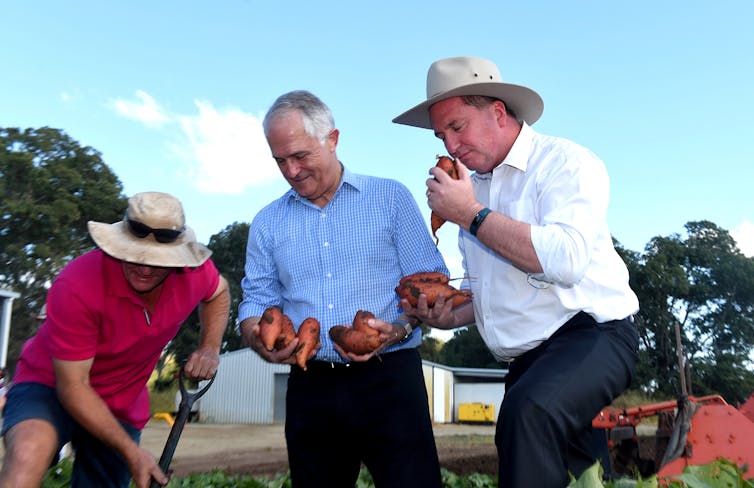
It is a truism that Australia, overwhelmingly urban for most of its modern history, draws its identity disproportionately from 'the land'. Those Qantas television advertisements with choirs of angelic children strewn elegantly in front of Uluru or the Twelve Apostles trade on the basic fact that Australians identify and want to be identified with the continent itself.
In this sense, Australia (the continent, the land, the soil, the bush) is imagined as a metaphysical substance which gives unity, meaning and destiny to what might otherwise seem like a collection of recently federated settler colonies, formed to extract resources for the benefit of a once powerful European nation state. The practice of agriculture is central to the belief that Australians as a people are expressive of Australia, the metaphysical ideal. Without this connection between agriculture and Australianness, we couldn’t make sense of such fashion icons as Akubra, Blundstone, Driza-Bone and R.M. Williams.
Serious questions

Serious questions about the way that Australia sustains people through the plants and animals that are husbanded on its ancient soils are not, of course, confined to the past several years. The revision might be traced to Tim Flannery’s The Future Eaters (1994), or even earlier to such seminal works of environmental history as Eric Rolls’ A Million Wild Acres (1981), W.K. Hancock’s Discovering Monaro (1972), and Barbara York Main’s Between Wodjil and Tor (1967) and Twice Trodden Ground (1971).
What each of these writers did was to make the Australian environment, or some part of it, an actor rather than a stage. The environment for these writers was not some broadly passive, albeit resistant, thing out there that needed to be overcome, battled, tamed, brought into submission — it was a dynamic system of interrelated parts, where every action had cascading consequences and complex repercussions.
At the centre of, or just beneath, all of these books is the attempt to try and locate some kind of basic environmental baseline. There seems to be no dispute about the fact that the agricultural colonisation of Australia by Europeans has had far reaching consequences for the organisation of the continent’s biota.
Read more: Queensland land clearing is undermining Australia's environmental progress
In almost every possible way the land has undergone serious and widespread interventions. The introduction of new predators, notably cats and foxes, caused (and continues to cause) mass extinctions of species. The introduction of hooved animals, in addition to their utterly different patterns of grazing, also hardened the soil and changed the extent to which rain is absorbed or runs off the surface of the land, often carrying soil into rivers which now run faster but also then silt up and slow down.
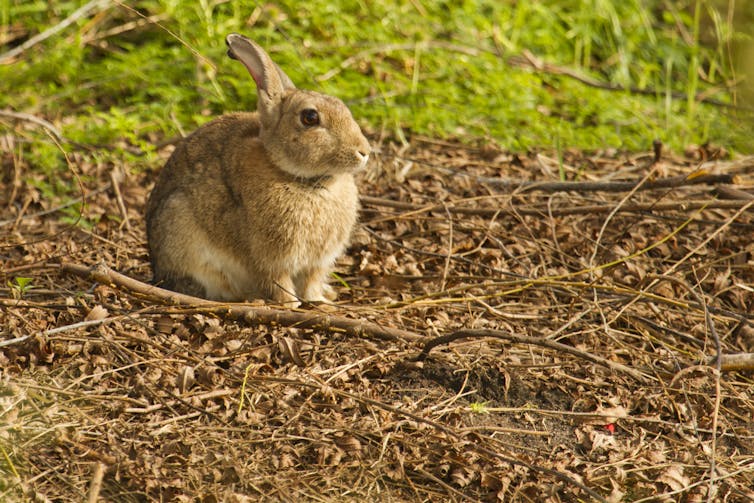
The removal of perennial, deep rooted vegetation for annual crops causes groundwater to rise and dissolves salt crystalised in the soil, resulting in soil salinity. Fire regimes have changed radically. Rabbits and other rodents out-compete native herbivores, while European carp have transformed the major river systems of the south east. The list goes on, and it is surprisingly familiar to all of us.
But as these things continue to run rampant, and as major questions begin to be asked about the sustainability of agriculture, we seem to be thrown backwards into the origins of these problems. And as we trace them back we come against the tantalising question of what it was all like before this. Before what? Before the arrival of Europeans. What did Australia look like in 1788, in fact? This is the question that each of these writers seems to be either answering, or at the least reacting against.
What it was like before
In this respect, Bruce Pascoe’s Dark Emu, which builds in important ways on Gammage’s earlier book, provides the most concerted attempt to answer the question about the quality of the country — in particular, the interface between human and nature — in the pre-colonial epoch. Because of the oral quality of Aboriginal societies, many of these questions have traditionally been considered to fall beyond the province of history proper, and into the study of pre-history (archaeology) and anthropology.
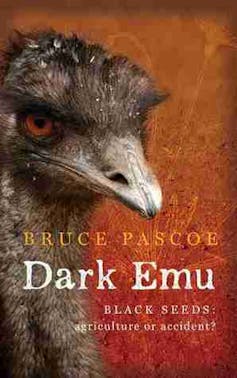
Indeed, there is something of a demarcation dispute around this crucial hinge between Aboriginal and European colonial lifeways. One of the strengths of Pascoe’s book is its ability to bridge archaeology, anthropology, archival history, Indigenous oral tradition and other more esoteric but highly revealing disciplines such as ethnobotany and paleoecology.
The key contention in Pascoe’s book is that the whole distinction between the farming colonist and the hunter-gatherer indigene is based on a radical, and frankly self-serving, misunderstanding of the way that the Indigenous peoples of Australia lived in their countries. Pascoe assembles a persuasive case that Indigenous Australians farmed their land, lived in villages, built houses, harvested cereals, built complex aquaculture systems — possibly the earliest stone structures in human history — and led the kind of sedentary agricultural lives that were meant only to have arrived with Europeans in 1788.
Read more: The detective work behind the Budj Bim eel traps World Heritage bid
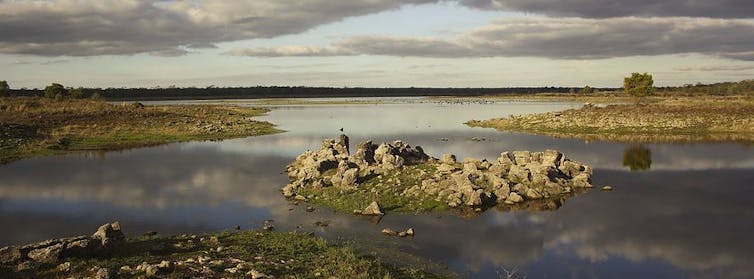
Pascoe is an Indigenous historian and is clearly motivated by a desire to redress the serial denigration of Indigenous people. His cards are on the table, but this does not mean that he is not a rigorous and exacting judge of the historical record.
Massy, for his part, was born and bred on a sheep and cattle farm on the Monaro plain — a farm he has now run for over 40 years. By his own confession, he spent the majority of his farming life assiduously contributing to the problems he is now just as assiduously diagnosing in The Call of the Reed Warbler. The book is in many respect a conversion narrative, documenting the moment when the scales fell from his eyes and he saw truly the world as it was — not a land made efficient and productive by the application of agricultural science, but a land emptied of its relationships and webs of life by a kind of collective psychosis. Farming wasn’t sustaining the land, it was ruining it. It was an extractive industry that had gobbled up thousands of years of sustenance in a few generations of sustained plunder.
Don Watson’s book The Bush is the most literary of these recent contributions, and it moves effortlessly and elegiacally between science, history, reminiscence and anecdote. He has a writing style that is epigrammatic and sonorous, reminiscent of the way that, in an American context, Wallace Stegner treated the tumultuous history of the American Great Plains.
Against the bluff empiricism that underpins Gammage and Pascoe, and the ardour of the convert that galvanises Massy, Watson offers something more elliptical and rhapsodic. He moves from his native Gippsland to Australia at large through a sort of sly mimicry of the discourse of the Australian bush. The bush is both the object of Watson’s study and his linguistic mode, since he draws his wry sensibility directly from Joseph Furphy or Henry Lawson. The distinctive admixture of acerbic humour, dark melancholy and a poignant apprehension of the absurdity of life that was the hallmark of the Bulletin school of writers.
Something is broken
What all of these books are saying, and why they are in fact getting traction now, is that something is broken. These books are not announcing that the environment is broken — they merely mention this in passing, regarding this as beyond any reasonable doubt. Instead, what these books are announcing is that agriculture is broken.
This, in the context of our self-image, is something that is much more terrifying and it will be savagely resisted. But each book is also hopeful in its way. None more than Charles Massy, whose book’s subtitle A New Agriculture, A New Earth is openly salvationist and The Call of the Reed Warbler is a detailed plan for the regeneration of degraded pastoral country that allows for both agricultural production and environmental recovery.
A few weeks ago, I was visiting the rock formation we whitefellas have called Wave Rock, in Western Australia’s southern wheatbelt. It is a stunningly beautiful granite outcrop and central to the lifeways of the Noongar people of this region.

What stands out now is the contrast between the cleared fields stretching to the horizon in every direction and this tiny oasis of bushland surrounding the rock. The paleo-river channels that shaped the landscape are now heavily waterlogged by a rising water-table and everywhere you see the signs of salinized soil — dead and dying shrubs and trees.
But as tourists we carefully avert our eyes and pose for photographs at the rock. This is in many ways a microcosm of the determined blindness that these recent books are trying to rectify.
![]() Bangarra’s Dark Emu ran in Sydney at the Opera House until July 14 then toured Canberra, Perth, Brisbane and Melbourne.
Bangarra’s Dark Emu ran in Sydney at the Opera House until July 14 then toured Canberra, Perth, Brisbane and Melbourne.
Tony Hughes-D'Aeth, Associate Professor, English and Cultural Studies, University of Western Australia
This article was originally published on The Conversation. Read the original article.
Book Review – Rainforest: Dispatches from Earth's most Vital Frontlines
There are many books on the environment, as you will see if you scan the shelves of bookshops like Kinokuniya, Abbeys or the Botanic Gardens. Many are well written too, vividly conveying an author's enthusiasm and love of nature though usually with guarded warnings about the future. But I stumbled on one recently that's exceptional. Written by Tony Juniper, long time campaign head and rainforest guru for Friends of the Earth and currently of WWF, it covers a vast spread of information on this precious global asset.
Juniper describes and highlights the enormous diversity of flora and fauna in rainforests both tropical and temperate, of which many people are already aware of course, but what I found compelling were the insights into the negative effects of clearing of rainforest on the mistaken philosophy that rainforest stands in the way of progress. This has effects not only on diversity but also on climate. He highlights research on the cyclical relationship of transpiration and rainfall, pointing to the enormous surface area of foliage available for evaporation – far more than if the same area were covered by water. He also, alarmingly, points to increasing drought in cleared land, and in agricultural land, savanna, and semi desert up to thousands of kilometres from retreating forests. (And yet we still allow tree clearing in this drought-ridden country?)
The diversity of course includes the traditional inhabitants, dismissed as of little consequence or an obstacle by European settlers and governments, from Theodore Roosevelt's ‘tenantless wilderness’ to our very own terra nullius. The chapter on the Amazon Basin is particularly illuminating because it highlights how the original people farmed the fertile flood plains, not by wholesale clearing but by retaining the canopy trees because they protect and enhance the soil and its moisture and fertility. Rainforest crops like cocoa and coffee grow best in protected settings. Wholesale clearing to plant oil palms and soya beans however is already having alarming consequences. (I rummaged through the pantry and fridge to see if we had anything containing palm oil to chuck; and then what about soya products?)
Tony Juniper is a veteran and very effective environmental campaigner and appears to have sufficient people skills to get opposing factions onside, despite being arrested and marched off at gunpoint in Davos. This includes both big business, politicians and land managers, including indigenous ones, and there is hope for the future beginning to dawn, but a lot more progress needs to be made, and soon!
This book is a must-read for politicians and land managers, especially many of the former! Oh, and Prince Charles gets a guernsey for his forest support – a good choice for future king I think!
Rainforest: Dispatches from Earth's most Vital Frontlines by Tony Juniper, Profile Books, London, 2018, 448 pp
John Martyn reckons this is the best environmental book he has ever read!
Ivanhoe Development: Will there be Genuine Offsets for the Loss of STIF Vegetation?
The amount of development along Epping Road is astronomical. Sure, this development is near the Chatswood to Epping train line and bus services. What happens to people wanting to go north or south? They will add the existing logjam on Lane Cove and Ryde Roads.
More Sydney Turpentine Ironbark Forest (STIF) will be lost How can it be possible to find an offset for the same ecological community?
Ivanhoe Estate which is located on Epping Road between Herring Road and Shrimptons Creek at Macquarie Park is up for mixed tenure high density re-development. At the moment there are 259 social housing dwellings in the locality comprising a mix of townhouse and four storey apartment buildings set around a cul-de-sac street layout amongst mature trees.
It has been that way for 25 or more years but the new proposal provides for 3,500 dwellings (with only 128 allocated to affordable rental housing), basement car parking, a private high school, child care centres, community and retail uses and maximum building heights ranging from 45 to 75 m (20 storeys). This is very clearly an overdevelopment of the site.
Of particular concern is the proposal to remove more than 800 trees from the site including remnant STIF. STIF is classified as an endangered ecological community under NSW and Commonwealth legislation. Currently only 0.5% of the original STIF community remains and every effort must be made to protect and maintain existing remnants intact.
The reason given for this removal is the footprint for the proposed basement parking and an access roadway which means that most of the site will be excavated.
The master plan for the site treats the loss of the STIF as unavoidable and proposes biodiversity offsets in accordance with the NSW Biodiversity Offsets Policy for Major Projects. These offsets are not acceptable because they do nothing to add to the total of remaining STIF. They rely on another remnant of STIF being identified that is not currently protected by zoning or legal agreement and making that site subject to such protections.
Despite the master plan relying on offsets for the loss of STIF, the Biodiversity Offset Strategy provides no information about the location of an offset site or time lines for implementing any offsets. The destruction of this important vegetation can be avoided by changing the master plan. This should be the first priority and must be done. There is ample opportunity to scale back the development and protect the STIF while providing an increase in the number of dwellings available in this increasingly developed area.
With Sydney’s population forecast to reach eight million people there will inevitably be many more similar conflicts between development and biodiversity across our city.
This information has been taken from the Ryde Hunters Hill Flora and Fauna Preservation Society newsletter, Wallumetta (August edition).
Website for Bird Watching Enthusiasts
We recently received a message from a fellow bird enthusiast about his blog called the Ultimate Beginners Guide to Bird Watching. It has a North American focus but has lots of useful information.
The blog has been written by Jonny who has been an avid bird watcher for well over 20 years. As he says birding is ‘a hobby, I can’t recommend it highly enough, so get out there and enjoy nature at its finest’.

